Nick Wilbourn
Technical Writer
SpinSys
Migrating a database from Oracle to the cloud can be complex. With careful planning and execution and the right tools and technologies, you can ensure a successful transition. This is true for both homogenous migrations (in which you maintain an Oracle database engine) and heterogeneous migrations (in which you switch to an open-source or cloud-native database). No matter the type of migration, here are some best practices to follow for a smooth Oracle database migration to the cloud:
Assessment and Planning. Ensure you understand your current database structure, dependencies, and workload patterns. You need to determine the exact scope of the migration, including which databases and schemas will be moved, as well as the compatibility of your Oracle database with the target cloud platform; this includes evaluation of the database and required resources in the cloud.
- Examples for heterogeneous migration: MDACA Performance Database (PDB), PostgreSQL, MySQL, SQL Server, etc.
- Examples for homogeneous migration: Oracle Cloud, Amazon RDS for Oracle, Azure Database for Oracle, etc.
Selecting a Cloud Platform. Choose the most appropriate cloud platform for your organization’s requirements, taking into account performance, cost, geographic location, scalability, application compatibility, and available services (e.g., managed database services). Some benefits of major cloud platforms include the following:
- Amazon Web Services (AWS) boasts numerous related services (e.g., storage, computing, IoT, advanced analytics, etc.), robust security, worldwide connectivity to Amazon data centers, and significant documentation.
- Microsoft Azure offers easy integration with Microsoft’s larger software suite, access to numerous developer tools and services, and notable enterprise-level features and services.
- Google Cloud Platform (GCP) has a strong focus on data analytics, machine learning, and open-source technologies, as well as advanced network features and global load balancing.
Migrating the Data. There are multiple methods for migrating data from your Oracle databases. These include the following:
- Full Database Migration: Export the entire Oracle database, and import it into the cloud using database backup and restore tools, such as MDACA Cloud Storage Explorer (CSE) and SQL Server Management Studio (SSMS).
- Data Pump: Use Oracle Data Pump to export and import data.
- GoldenGate: Implement Oracle GoldenGate for real-time data replication between the on-premises Oracle database and the cloud database.
- Cloud-Native Data Migration Tools: Many cloud providers offer tools designed specifically for migrating databases to their platforms. Examples include AWS Database Migration Service (DMS) and Azure Database Migration Service.
The method you choose may depend on several factors, including complexity of the data and schema transformation, data volume and velocity, minimal downtime requirements, resource availability, security and compliance requirements, cost, data consistency, scalability options, and overall project timeline.
Schema and Data Transformation. Adapt your schema and data structures to match the requirements and best practices of the target cloud platform, and convert Oracle-specific features to their equivalent cloud database features. Optimize queries and application code for the new cloud database environment.
Testing and Validation. Set up a test environment in the cloud to validate the migration process and test application performance and functionality. Thoroughly test the migrated database and applications to identify and resolve issues.
Backup and Rollback Plan. Have a backup and recovery strategy in case you encounter problems during the migration, as well as a rollback plan in case you need to revert to the on-premises Oracle database.
Performance Tuning. Monitor the migrated database’s performance in the cloud, and leverage cloud-native tools for performance monitoring and optimization. Optimize queries, indexes, and configurations as needed.
Security and Compliance. Implement cloud security best practices, such as data encryption, authentication, and access controls. Ensure compliance with relevant data protection regulations during and after migration.
Training and Documentation. Provide user training on how to use and manage the cloud database platform. Update relevant documentation to reflect changes and procedures related to the cloud environment.
Continuous Monitoring and Maintenance. Monitor the health and performance of the database continuously once migrated to the cloud. Review and update your cloud environment regularly to adapt to evolving business needs and technological advancements.
No matter your unique scenario, these strategies can help guide your Oracle database migration to the cloud. Tools such as those in the MDACA suite can help your organization to achieve a successful and seamless migration by streamlining the migration process and ensuring comprehensive data integrity.
References:



